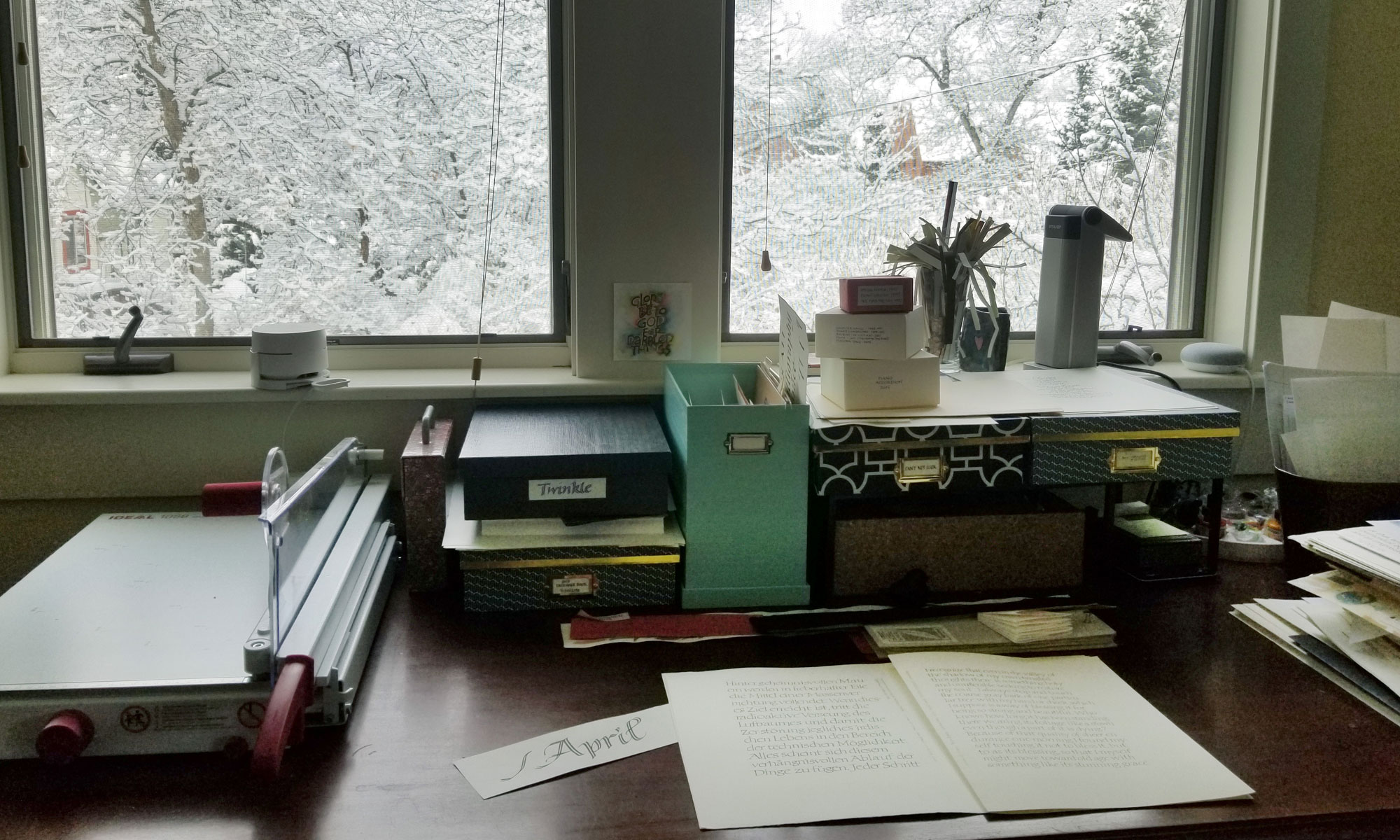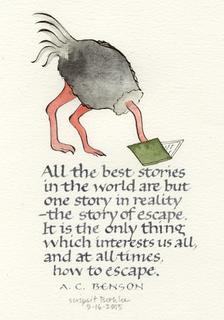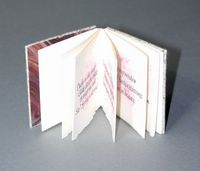
Here’s a piece that may not see the light of day in real life. I’ve been working on 10 pieces for a show that was to be hung tomorrow in the local community theater. The pieces are based on lines from the script of the play that starts next Friday. This had been in the works for 2 months, but there may not be room for my pieces.
In the original post, the picture was much bluer than this one. This one’s color-corrected.








